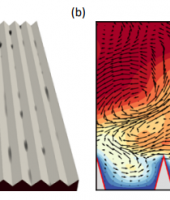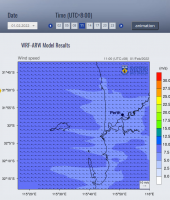Reduced-order models of wall-bounded turbulence
Wall turbulence is a critically important phenomenon for any system where fluid flows past an object. Wall turbulence is responsible for 90% of the drag experienced by a large crude tanker, to give just one example. This project aims to investigate novel ways to model and control wall turbulence by exploiting the presence of recently- discovered large-scale structures. This will ultimately lead to significant reductions in the drag and fuel burnt by transport vehicles.
Area of science
Applied Science, Chemistry, Engineering
Systems used
Magnus
Applications used
Python, CThe Challenge
Fluid mechanics is difficult for a number of reasons. One is that we are limited in what we can measure in experiments and in field measurements. The aim of this proposal is to develop a low-order, physics-based tool for the estimation of fluid flows using limited measurements. The work sets out to exploit the fact that, despite their complexity, fluid flows often contain large-scale coherent features.
The Solution
The development of suitable reduced-order models directly from the underlying physics (the Navier-Stokes equations). These reduced-order models are important because, without them, the equations are too large to be solved. These reduced-order models are then used, together with limited measurements, to estimate the flow elsewhere.
The Outcome
The work has allowed, for the first time, physics-based models to predict important flow features from limited measurements. An important long-term application is the estimation of coherent structures from limited field measurements, and the method would undoubtedly lead to a wide range of applications.
List of Publications
Nardini, M., Illingworth, S. J. & Sandberg, R. D. (2019). Nonlinear reduced-order modeling of the forced and autonomous aeroelastic response of a membrane wing using Harmonic Balance methods. J. Fluids Structures.
Madhusudanan, A., Illingworth, S. J. & Marusic, I. (2019). Coherent large-scale structures from the linearized Navier-Stokes equations. J. Fluid Mech. 873, 89-109.
Vadarevu, S. B., Symon, S., Illingworth, S. J. & Marusic, I. (2019). Coherent structures in the linearized impulse response of turbulent channel flow. J. Fluid Mech. 863, 1190-1203.
Oehler, S. F. & Illingworth, S. J. (2018). Sensor and actuator placement trade-offs for a linear model of spatially developing flows. J. Fluid Mech. 854, 34-55.
Illingworth, S. J., Monty, J. P. & Marusic, I. (2018). Estimating large-scale structures in wall turbulence using linear models. J. Fluid Mech. 842, 146-162.
Nardini, M., Illingworth, S. J. & Sandberg, R. D. (2018). Reduced-order modeling and feedback control of a flexible wing at low Reynolds numbers. J. Fluids Structures 79, 137-157





